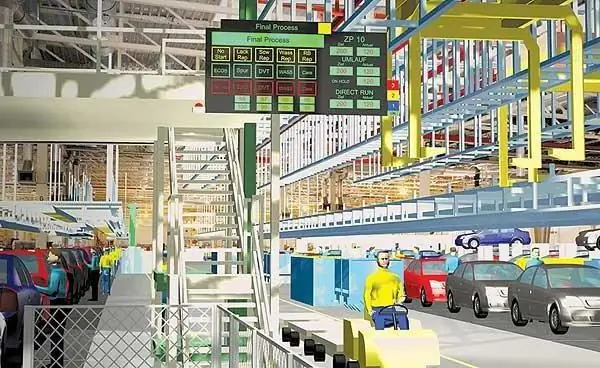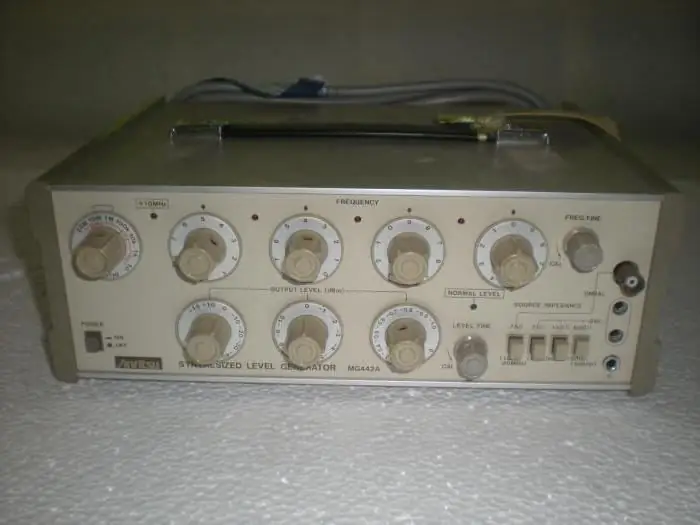2025 Author: Howard Calhoun | [email protected]. Last modified: 2025-06-01 07:12:56
The VVER-1000R plant is a reactor with a circulation circuit, a pressure compensation system and an emergency cooling unit. The main circulation circuit includes a reactor and four working loops, each of which is equipped with a horizontal type steam generator, a circulation pump, and a Du 850 pipeline (with a nominal diameter of 850 mm). The energy of the fuel is removed from the core with the help of a coolant pumped by the main circulation pumps. Then the heated carrier is transported through the pipeline to the steam generators, where it transfers heat to the liquid of the secondary circuit, after which it returns to the reactor under the influence of the pump. Dry saturated steam from the second circuit is transferred to the turbines.

VVER-1000 reactor
This element is designed to generate thermal energy in the construction of a steam-conducting nuclear power plant with a capacity of one unit of 1 thousand MW. In fact, the reactor is a nuclear power element of a vessel configuration with thermal neutrons, as well as ordinary water, which serves as a coolant and moderator.
The design of the VVER-1000 reactor includes a vessel with a shaft, a baffle, an active part and a safety tube assembly. The upper part of the body is equipped with a blockmanagement and protection. The coolant is transported to the reactor through four lower branch pipes and flows down the annular gap. Further, its path is the active zone, where it enters through the bottom of the mine. There, the coolant is heated from the heat of the nuclear reaction and is removed from the reactor through the upper nozzles and shaft openings. The power of the unit is adjusted by moving the control elements in the active compartment (a set of absorbing rods hanging on special traverses).
Case
This part of the VVER-100 reactor is used to place the core and devices inside the vessel. The frame is a vertical tank in the form of a cylinder, it consists of a flange, a block of nozzles, a shell, a cylinder with an elliptical bottom.
The flange has 54 threaded holes of size M1706. They are designed for studs and wedge-shaped grooves that serve to install the bar sealing gaskets of the main connector. The body part of the VVER-1000 is equipped with two rows of nozzles. On the main directions of the upper and lower tiers, analogs of the size DN 300 are provided. They serve for docking the emergency cooling system of the active compartment, as well as several DN 250 branch pipes that output the impulse lines of measuring instruments.

The body is made of alloy steel. The inside is coated with a special coating that is resistant to corrosion. The skeleton weighs 323 tons. The unit is transported by rail or sea.
Mine
This part of the VVER-1000 is focused on creating a flowthermal carrier, refers to an integral part of the protection of the metal case from neutron fluxes and gamma radiation emitted from the active part. In addition, the shaft serves as a support.
Structurally, the part represents a shell of a cylindrical configuration of a welded type. In the upper part of the device there is a flange serving as a support on the inner shoulder of the core. The bottom has a perforated bottom. In the bottom there are supporting parts for the fuel cassette elements of the active compartment. The separation of the hot and cold coolant flows from the outside is provided by an annular thickening, aggregating with a separating analogue of the VVER-1000 reactor vessel.
From below, the vibration shaft is fixed with dowels, which are welded to the vibration damper, and enter the vertical sockets of the structure. The lid of the upper block keeps the shaft from surfacing with the help of a tubular elastic holder. Structurally, the shaft is made in such a way that it makes it possible to remove it from the core of the reactor in cases of fuel refueling. This is necessary to inspect the insides of the nozzles and the body. The weight of the anti-corrosion steel shaft is 69.5 tons.

Fence
This part is used to change the area of the release of the energy formation and organize the transportation of the heat carrier through the active zone. An additional functionality of the baffle is to protect the metal of the core from the effects of aggressive radiation.
The element is a thick-walled cylinder with five forged rings. The inner part of the block duplicates the contour of the activecompartment. The unit is cooled by vertical channels provided in the baffle rings. They are connected mechanically, the lower element is fixed on the faceted belt of the shaft, and the upper ring is centered in relation to the shaft cylinder with the help of welded dowels. The enclosure is made of durable anti-corrosion steel and weighs 35 tons.
VVER-1000 steam generator
This element is a single-shell heat exchanger with a pair of circuits. It has a horizontal arrangement, equipped with a submersible set of pipes. The design of the steam generator includes a core, an inlet and outlet header, a heat exchange tube bundle, a feed liquid distribution header, a separator, a steam removal unit, a drainage and blowdown unit.

The unit is designed to function as part of both circuits, it produces dry saturated steam from the water of the second cycle. The material of manufacture is alloy steel, inside it is protected by a special surfacing that is resistant to corrosion processes.
Technical plan parameters
VVER-1000 steam generator characteristics:
- The thermal power index is 750 MW.
- Steam capacity - 1469 t/h.
- Nominal pressure in the second circuit is 6.3 MPa.
- Heat exchange surface - 6115 m.
- Consumption of heat carrier - 20,000 m/h.
- The moisture content in the steam at the outlet is 0.2%.
- The volume of the skeleton is 160 m.
- Weight - 204, 7 t.
Pressure compensator
The item is a reservoir of highpressure, equipped with blocks of built-in electric heaters. In working condition, the tank is filled with water and steam. The unit is designed to operate in conjunction with the system of the first cycle of the reactor, maintains pressure in the circuit during normal operation and limits fluctuations in the event of transition to emergency mode.

The pressure in the compensator of the VVER-1000 NPP is created and fixed by means of corrected liquid heating, which is provided by electric heaters. The compensator is provided with a system for injecting water into the steam compartment from the cold parts of the primary circuit by means of a spray device. This avoids an increase in pressure above the calculated values. The body of the compensator is made of alloy steel with internal protective welding.
Other accessories
The scheme of the VVER-1000 reactor is shown below. It includes several more units, namely:
- Ion exchange filter. It is filled with special resins and is made in the form of a vertical high pressure tank. The element serves to clean the heat carrier from radioactive particles, insoluble corrosive inclusions. The filter housing is made of anti-corrosion steel.
- Emergency zone cooling tank. This is a vertical high-pressure vessel that serves to ensure emergency filling of the active part of the reactor with coolant in the event of an emergency. The system includes four autonomous tanks connected to the reactor corethrough pipelines.

In addition, the design includes a stepper electromagnetic drive with a block of electromagnets, an upper block (serves to create a closed volume and working pressure of the reactor), a protective tube assembly.
Recommended:
Material flow in logistics: overview, characteristics, types and schemes

Types and classifications of material flows. Basic principles of their organization and management. Characteristics of material flows and their analysis
P36 steam locomotive: types, device, technical characteristics and years of use

Prerequisites for the emergence of locomotives P36. The history of the design and completion of the development of the first prototype locomotive in the series. Establishing the release of subsequent models. Technical characteristics of the steam locomotive P36. The main changes in the design during serial production. Description of the structure of the undercarriage, steam boiler, machine and tender. Features of operation and perpetuation of the locomotive in culture
ICE - what is it? Internal combustion engine: characteristics, scheme

It would not be an exaggeration to say that most self-propelled devices today are equipped with internal combustion engines of various designs, using various operating principles. In any case, if we talk about road transport. In this article, we will take a closer look at ICE. What it is, how this unit works, what are its pros and cons, you will learn by reading it
High-frequency generator: overview, features, types and characteristics

Currently, the number of various electrical appliances is large. One of these was a high-frequency generator. As the name implies, it is used to set the oscillation frequency in a certain range
Generator sets: diesel power plant. Characteristics, maintenance, repair

The article is about diesel generator sets. The characteristics of such equipment, the nuances of maintenance and repair are considered

